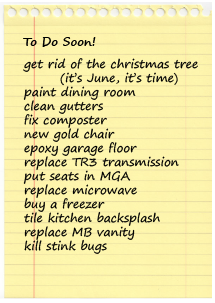 I read a great piece by Whitney Hess over at A List Apart (a great site, as they say, “For people who make websites” and I say, for people in business in general!). From her article: No One Nos: Learning to Say No to Bad Ideas. Part of her article was take-aways from the book The Power of a Positive No: How to Say No and Still Get to Yes
I read a great piece by Whitney Hess over at A List Apart (a great site, as they say, “For people who make websites” and I say, for people in business in general!). From her article: No One Nos: Learning to Say No to Bad Ideas. Part of her article was take-aways from the book The Power of a Positive No: How to Say No and Still Get to Yes
by William Ury. I particularly like this one:
The shorter it is, the stronger it is. Pascal famously said, “I wrote you a long letter because I didn’t have time to make it shorter.†The longer the argument, the sloppier and less well-thought out it appears.
My son had a science teacher in high school who once told me, “Tommy conveys more information in fewer words than any other student I’ve had.” That’s a great life skill. (Perhaps not so useful when the assignment is for 5 pages and the topic’s been covered—fully—in 2… nevertheless…)
When a person is talking, and trying to say “no,” they are often looking at the other person’s body language and interpreting it, judging it. So they use more words to soften the perceived blow of the “no.”
But maybe the receiver of the “no” is just thinking, “Whew, I didn’t want that anyway.” or “Thanks for seeing that what I said I wanted isn’t what I really wanted.”  When you judge the reply before you get it, you may cut off the outcome you actually want.
And the argument gets muddy and frustrating for both parties.
You don’t have to answer every request as it’s made. Even in direct conversation you can say, “Wait a minute, I’m thinking about that.”
The request could be totally bats. But if it’s made by your boss or a client or a prospective client, consider the tone of your reply. There is a fine line between blunt, and maybe rude, and wishy-washy mamby-pamby whatever-you-want-dear kind of reply.
So here’s the advice:
1. Decide what you want at the end of the conversation. Do you:
- want the job, but you don’t want to be micromanaged?
- just plain don’t want to work with that person? or
- The job really is too bats to be considered.
If you want the job but not on those conditions, keep the former in the front of your mind. Don’t worry about details that don’t effect that result.
Say the job is “Fly off this roof to the ground.” Don’t just say, “That won’t work.” Even when you know it won’t.
How about, “That won’t work because people have no wings. “ Or skip the that-won’t-work part and go directly the thing that WILL work. “I’ll meet you out front.” Then take the stairs.
2. Plan a way for the other person to save face. Give them some way out of the end of the converstation. Pass back a request for clarification or a negotiation over the project. “What do you want to get out of my flying off the roof?”
3. No matter what, be polite. You don’t know when you might need that person again. AND you don’t know who that person knows!
4. Keep your eye on the prize, so to speak. Decide what you want to be the outcome. Then steer the conversation that way. It’s not manipulative in a bad way. If the other person really doesn’t agree with you, they’ll let you know.
And maybe, if you can’t get the negotiation to the result you want, you’re better off not working with that person anyway.




 I read a great piece by
I read a great piece by 
 Some stuff you can’t clean up before people come over. But if you post a larger than life list, it WILL give people something to talk about. And they’ll focus on your list instead of the half painted walls.
Some stuff you can’t clean up before people come over. But if you post a larger than life list, it WILL give people something to talk about. And they’ll focus on your list instead of the half painted walls.